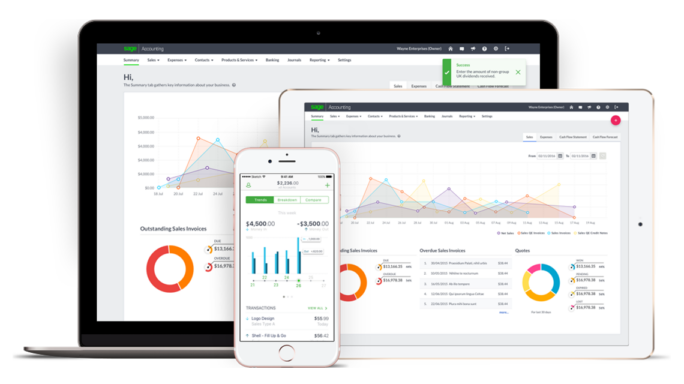Days payable outstanding – defined
Discover what Days Payable Outstanding (DPO) means, its calculation, significance, and how managing DPO effectively can impact your business.

Do you wonder what terms like “DPO” or “Days Payable Outstanding” mean? If you’ve ever been stumped by these terms or perhaps, you’ve heard about them but never quite understood what they meant, then this article is for you.
We’re breaking down this essential business metric, lifting the veil off the mystery that is Days Payable Outstanding to get a firm grip on what it means for your business.
Keep reading for a breakdown of the DPO meaning and why it’s significant to your business’s financial standing.
Here’s what we’ll cover
What does Days Payable Outstanding (DPO) mean?
Days Payable Outstanding, often abbreviated as DPO, is a financial metric that shows how long, on average, it takes for a company to pay its invoices from trade creditors, such as suppliers.
In simpler terms, it measures the average number of days a company takes to pay its bills.
This indicator gives us insights into a company’s management of payables and cash flow.
To illustrate the DPO meaning, let’s imagine two hypothetical companies: QuickPay Corp and SlowPay Ltd.
QuickPay Corp has a DPO of 30 days. Meaning on average, it pays its bills within a month of receiving them.
On the other hand, SlowPay Ltd has a DPO of 90 days, indicating it usually takes about 3 months to pay its bills.
A first glance might lead you to think QuickPay Corp is more efficient because it pays faster. However, from a cash flow perspective, SlowPay Ltd may be in a stronger position. ClowPay Ltd gets to utilize its cash on hand for a longer period before paying off its debts.
This could potentially allow SlowPay Ltd to invest that money back into the business, fund its operations, or even earn interest.
That said, it’s important to strike a balance.
If SlowPay Ltd takes too long to pay its suppliers, it could potentially harm its supplier relationships or risk missing out on early payment discounts. Therefore, an optimal DPO isn’t necessarily about paying as soon as possible or delaying as long as possible; it’s about finding a balanced duration that maximizes cash utility without compromising supplier relationships.
The DPO calculation
Calculating DPO might seem like a complex task, but once you understand the formula and its components, you’ll find it surprisingly straightforward.
The formula involves 3 essential components:
- Accounts Payable,
- Cost of Goods Sold (COGS),
- and the number of days in the period you’re analyzing.
Accounts Payable (AP): This represents the money your company owes to its suppliers or vendors for goods or services received. You can typically find this information on your balance sheet.
Cost of Goods Sold (COGS): This is the total cost of all the goods sold by your company during a particular period. It includes direct costs associated with producing the goods your company sells, such as raw material costs and direct labour costs. This information is typically found in your income statement.
Number of days: This represents the period you’re analyzing. This could be a year (365 days), a quarter (90 days), a month (30 days), or any other period you choose, depending on the specificity you want in your analysis.
Now, to calculate DPO, you simply divide the accounts payable by the cost of goods sold, then multiply the result by the number of days in the period.
DPO = (AP / COGS) x Number of days
This formula essentially translates the payable amount you have into a timeframe. It shows how long it typically takes for you to settle your bills.
The calculation is most commonly done on an annual basis using 365 days. However, it can be adjusted for any period.
For instance, if you want a quarterly analysis, you can adjust the number of days to 90. This flexibility allows you to adjust the calculation to suit your specific analytical needs.
You’ll gain insights that are relevant to your company’s operations and financial planning.
An example of the DPO formula
To put the Days Payable Outstanding calculation into context, let’s consider an example.
Suppose a company, Stellar Manufacturing, has an account payable of $150,000 and a COGS of $600,000. We want to calculate the DPO for the year.
Here’s how the calculation would look using the Days Payable Outstanding formula:
DPO = ($150,000 / $600,000) x 365 = 91.25 days
The resulting DPO indicates that Stellar Manufacturing, on average, pays its bills about 91 days after receiving them.
Automate your small business accounting
Easy to setup. Easy to use.
Save time, improve cash flow, and get paid faster with Sage Accounting.

Understanding the significance of DPO
As mentioned above, a higher DPO means that a company takes a longer time to pay its suppliers.
This can be beneficial from a cash flow perspective.
It implies that the company can use the cash it has on hand for a more extended period before settling its payables.
Conversely, a lower DPO suggests that the company pays its bills faster.
This might reflect favourably on the company’s reputation. However, it may also mean that cash is not being used as efficiently as it could be.
Just as the speed of life differs between a bustling city and a tranquil village, DPO varies significantly between industries.
Factors such as payment terms, business models, and industry practices all contribute to this variation.
For instance, industries such as the retail sector might have a shorter DPO due to quick inventory turnover and traditionally shorter payment terms.
In contrast, a manufacturing business, which often deals with large-scale suppliers and has longer production cycles, might have a higher DPO.
For example, let’s say the Days Payable Outstanding industry average for retail is around 30 days, but for manufacturing, it’s 60 days.
If a retail company has a DPO of 45 days, it might seem reasonable when compared with manufacturing. However, this figure is considerably higher than the retail industry average. It suggests that this retail company takes a longer time to pay suppliers compared to its industry peers.
Therefore, comparing your company’s DPO with the industry average provides a more accurate picture of your payment practices.
It’s like comparing apples to apples rather than apples to oranges. It allows you to benchmark your company against others in the same sector. You’ll gain insight into your relative performance and offer a clearer understanding of your cash management efficiency.
In addition, analyzing the trends in your DPO over time, alongside industry averages, can indicate the effectiveness of changes in your payment policies or cash management strategies.
This makes DPO not just a snapshot of your current situation, but a tool for monitoring progress and driving improvements.
Striking the right balance with DPO
DPO, like many financial metrics, is not just about reaching the highest or lowest number.
Instead, it’s about finding the right balance that works best for your business’s unique circumstances and strategies. This balancing act is crucial because it directly impacts your relationships with suppliers and your overall cash flow.
On one hand, a higher DPO means that your company is able to hold onto its cash longer. This can be advantageous, as it allows for greater liquidity and the opportunity to use that cash for other operational needs or investments.
You’re essentially extending an interest-free loan from your suppliers, enabling you to make the most of your available resources.
For example, if your company manages to negotiate longer payment terms with suppliers without penalties, it could potentially use the cash to fund its operations, invest in growth opportunities, or even earn interest.
This could make a significant difference in the company’s financial health and growth trajectory.
On the other hand, excessively stretching the DPO could potentially strain your relationship with suppliers.
They might become reluctant to offer the same generous payment terms in the future or could even decide to stop doing business with you altogether.
Moreover, some suppliers offer discounts for early payments, which you could miss out on if you take too long to pay.
For instance, terms like “2/10, net 30″ mean that the supplier offers a 2% discount if the bill is paid within 10 days instead of the standard 30 days. If your DPO is significantly above this, your business could be leaving money on the table.
Similarly, a very low DPO might seem ideal since it means your company pays its bills promptly. While this can foster good relationships with suppliers, it might also indicate that you’re not maximizing your cash efficiency.
Quick payments can tie up cash that could otherwise be used for running daily operations or capitalizing on investment opportunities.
In essence, managing DPO is a delicate act of juggling the benefits of holding onto cash with the need to maintain healthy supplier relationships and optimizing cash management. It’s about finding that sweet spot—a DPO that reflects strategic payment timing, balanced cash utilization, and sustainable supplier relationships.
Read more: Accounts payable vs accounts receivable – a guide
Final thoughts on DPO
In conclusion, DPO is more than just a financial metric.
It’s a strategic tool that can offer valuable insights into your company’s cash flow and payables management.
It allows you to:
- benchmark against industry peers,
- evaluate the effectiveness of your payment practices,
- and make informed decisions that can influence your company’s financial health.
However, the power of DPO lies not just in understanding what it is, but in how to use it effectively.
The right DPO for your company strikes a balance between maintaining a healthy cash flow and preserving good relationships with suppliers. By understanding and managing your DPO wisely, you’re not just crunching numbers, you’re shaping your business’s financial future.
Remember, in the world of business, knowledge is power, and understanding your DPO gives you the power to manage your cash more efficiently, negotiate better terms with suppliers, and ultimately, drive your business success.
So, take a closer look at your DPO, and uncover the opportunities it might hold for your business.
Editor’s note: This article was originally published in June 2023 and has been updated for relevance.






Ask the author a question or share your advice